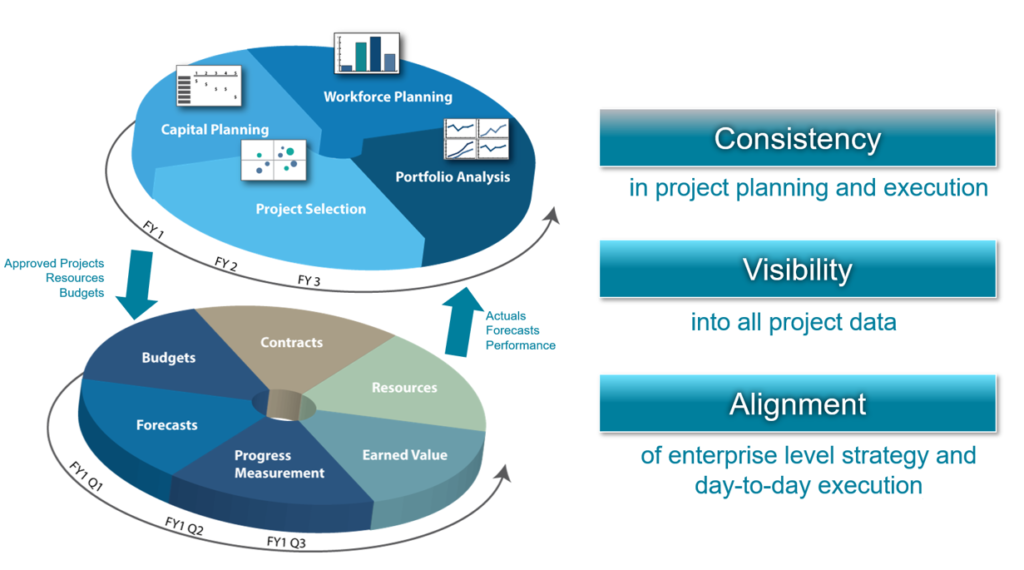
“Certainly, the larger the projects, the bigger the budget, the more there are projects, then the more you can benefit from a PMO.” “If you run projects, the projects have a significant level of cost or have significant level of impact, then you can really benefit from PMO,” said Fritsch. Also, if you’re about to implement any significant projects or strategy changes - or the strategy you already have isn’t being met, a PMO might be right for your organization. If your company is the latter, then a PMO can help. The best place to start when considering whether or not you need a PMO is to take a good, hard look at how your company operates and see if different segments of it are already working together across systems and groups in harmony, or if they operate as silos with different systems and don’t often talk to each other. By 2030, they predict that multiple PMOs that may now exist within an organization will “amalgamate into one function concerned with change, strategy, project evolution and organization governance,” according to an April 2017 report. Gartner expect the role of the PMO to change because of digital transformation, especially as artificial intelligence becomes more pervasive and takes on traditional PMO functions. PMOs, like everything, will evolve and change during the digital revolution. They’re also common in organizations that are running large programs in business process transformation.Įxternal PMOs have many of the same qualities as internal ones, but are also “really good at communicating with the customers and the stakeholders and product teams that are doing the development of the work that you’re managing,” said Grieshaber. Internal PMOs “bridge the gap between teams that are doing agile development and very iterative development,” said Jeff Grieshaber, senior manager at World Wide Technology. PMOs can be internal or external facing too. These are most common in highly regulated, high risk environments.

“It puts in some measure of control of the projects,” said Fritsch. A Controlling PMO isn’t entirely hands off but it’s not a task master either.“Come on in, we’ll give you ideas, give you best practices and you can ignore us completely and we won’t say a thing.” A Supportive PMO is “the kumbaya” kind of PMO, says Fritsch, where a PMO provides help if it’s needed.In order of least support to most support, the three general types of PMO are Supportive, Controlling and Directive.
PROJECT OFFICE SUPPORT HOW TO
This is a key part of retention, too, so that project managers within the PMO don’t see that office as the end point of their careers (and, possibly, a dead end, and leave).įor more on establishing a successful PMO, see “ How to develop a PMO strategic plan.” Different types of PMO “It shepherds folks through career progression.” It’s not uncommon, he says, for project managers to move up to the executive level in a company. “That center of excellence also can be the career path,” he said. While all of the above are important, Fritsch says that the last item is also a way for companies to develop talent - even outside of the PMO. Coaches, mentors, trains and provides oversight for project managers and staff.Identifies and develops project management methodology, best practices and standards.



Integrates data and information from corporate strategic projects/supports the balanced scorecard.Is a key enabler for the high-performing organization.Is agile enough to adapt as strategy shifts.Aligns with corporate strategy and culture.Provides tangible, repeatable, long-term benefits to the business.Michael Fritsch, vice president PMO at Confoe, which both provides PMO services and helps companies create their own internal PMOs, says that a good PMO:


 0 kommentar(er)
0 kommentar(er)
